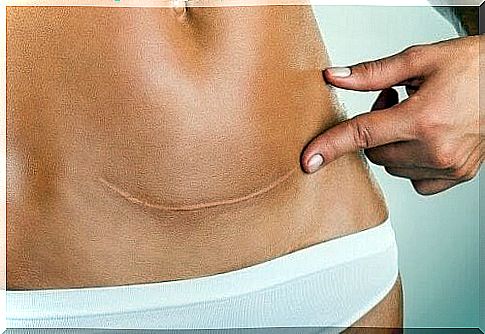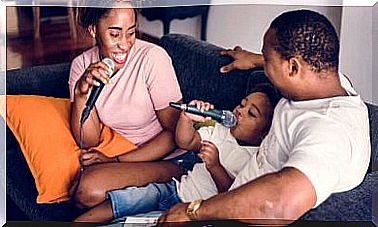Caring For The Scar Of A Caesarean Section

Caring for the scar from a caesarean section after delivery is not complicated, but regular follow-up care is key to recovery.
Because your skin forms scar tissue to help the wound heal, it’s important to prevent infections. It is also important to pay attention to possible complications.
In this article we will discuss some practical tips for the care of the scar of a caesarean section. In addition, we will discuss helping your body heal after childbirth.
How the scar from a caesarean section heals
When a new mom comes out of the operating room, she will find that the area of the incision is covered with a surgical bandage.
In the first few weeks after a cesarean section, she should pay close attention to this area. This is in case the incision bleeds or opens up.
Women who have had a cesarean section will also need to change the bandage regularly to prevent infection.
After a few days, it will no longer be necessary to always cover the incision area. In general, a wound heals faster when it is exposed to the open air.
Dressing can trap the moisture, creating an environment in which microorganisms and pathogens can thrive.
Once the scar has formed, it is normally flat and pink in color. About 5% of women develop keloid after delivery.
Keloids are characterized by abnormal growth of scar tissue and are more common in people with darker skin tones.
With this in mind, women who have given birth by cesarean section should have regular checkups with a trusted professional.
A medical professional will know how to identify keloid. He can also offer treatment options to improve the appearance of the scar.

Take care of your skin during pregnancy to promote healing
To make the care of a cesarean scar easier and prevent keloids, prepare while you are still pregnant.
Apply a good moisturizer or aloe vera lotion every day to maintain your skin’s elasticity. This prevents tearing and helps the skin form better scar tissue after a cesarean section.
You can also adjust your diet during pregnancy to give your skin a boost. Pregnant women should eat plenty of protein and stay well hydrated.
Getting plenty of fruits and vegetables in your diet will also help boost your immune system. In addition, it helps prevent constipation.
Caring for the scar of a caesarean section: daily hygiene
Daily cleaning of the scar area is crucial to prevent infection. Therefore, wash the area with warm water and a mild soap. Do this with very gentle movements.
Stay away from products that can irritate the skin, such as:
- perfumed shower gel
- exfoliants
- antibacterial soap
After washing and rinsing with plenty of water, dry the area thoroughly. Moist skin can be a breeding ground for bacteria and other pathogens. Gently pat the incision area dry using clean gauze.
While you wash and dry the wound, avoid any sudden movement that strains your abs. Any impact or tension on this area can slow the healing process.
Leave the scar uncovered to accelerate healing
Covering a wound creates a moist microclimate in the area. This can slow down the healing process. Micro-organisms are also given an ideal place to grow.
The longer you can expose your cesarean scar to the air, the easier and faster the healing process will be.
However, if you want to go outside, clothing can rub against the area and cause irritation. Use a simple gauze bandage and hypoallergenic medical tape to avoid this.

Look for soft cotton clothes
During the healing process you will feel more comfortable in soft, airy clothing, preferably made of cotton. Thick clothing and artificial tissues can trap moisture in the abdominal area, exposing the wound to microorganisms.
If it’s cold, wear a cotton top as a base layer and layer over warmer clothes.
The key is to make sure that any substance that comes in contact with your skin will not hinder the scarring or cause an allergic reaction.
Every woman is different and every body heals at a different rate. However, when caring for a cesarean scar, take care of your own needs and listen to your body.
Your first point of contact should be your healthcare provider. This professional will also give you postpartum guidelines that will help your body recover.








